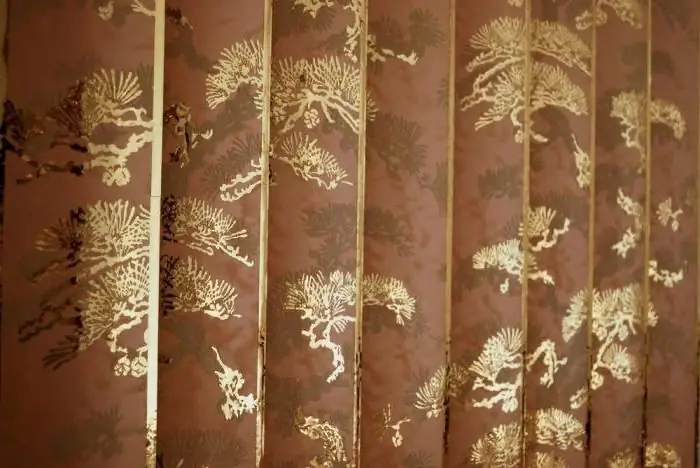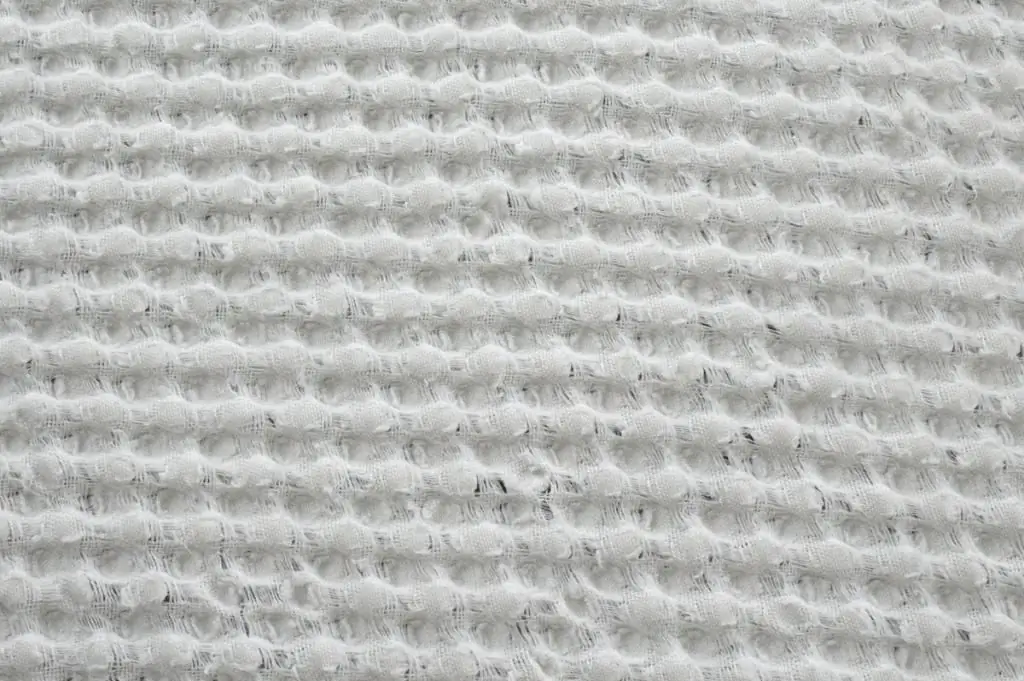2026 Author: Priscilla Miln | [email protected]. Last modified: 2025-01-22 17:55:19
All non-knitted fabrics of fabric materials have a standard weaving structure - warp and weft. What does this mean? Imagine a long track of material on a roll. Those threads that are laid along its length are called warp threads. And those that go across are weft threads (emphasis on A). Depending on the direction of the threads, the cut of parts is built when sewing garments, the features of fit and connection are taken into account. These are the main fundamental points, without which it is simply impossible to sew a quality product.

What does the longitudinal edge - the edge of the fabric indicate?
In fact, the purpose of this edging is of interest to beginner seamstresses. So, the longitudinal edge (edge) of the fabric indicates to us the direction of the lobar thread. The edge does not spread, it is fixed in a special textile way and prevents threads and fibers from breaking along the roll. If you have a piece of cloth in front of you and you don't know how todetermine its shared thread - just lay out the patterns along the edge, strictly parallel to it!
Another, more professional method of determining the grain line is to try to stretch the fabric. All non-knitted fabrics stretch slightly against the lobar and are absolutely inelastic along it. That is, if you have a piece of material with a removed edge in front of you, then you need to try to stretch it. Exactly where it stretches, there will be a weft thread, and where it is static, there will be a shared thread. Please note that the fabric stretches the most along the bias, but then some deformation will be noticeable.

Purpose
What is the longitudinal edge (edge) of the fabric for? Perhaps few of the readers have ever thought about the purpose for which, on a monotonous weaving of a fabric, it is the edge that is distinguished by a special type of weaving and is clearly different from the main texture. As already mentioned, the edge of the fabric prevents the roll from fraying at the edges. This is the first and leading edge function.
The second, no less important point is the definition of equity. Let's give an example of the imbalance of the cut.

The beginner seamstress cut the sleeve against the grain thread. Everything went according to plan, the pattern was built with precision, the connection was made without violations, she tried very hard. But on fitting, the sleeve turned out to be tight. It was impossible to raise the arm, in the area of the forearm it pulled and squeezed, and in the area of the armpit everything gathered into wrinkles. The young craftswoman fell into despair, and she was right - it was already impossible to save the sleeve. Everythingdue to the fact that the fabric does not stretch along the lobar at all, and the student made the sleeve width according to the lobar and thereby pulled the client's forearms.

Importance when cutting
Of course, the longitudinal edge-edge of the fabric determines the layout of the patterns and the consumption of the fabric. Sometimes it seems that the material would take much less if it was laid out in a chaotic direction or across the edge. But, as we wrote above, such deviations from the rules are obviously doomed to failure.
Each beginner seamstress knows from the first lessons that the longitudinal edge (the edge of the fabric - the name in the terminology of sewing disciplines) is a clear and categorical guideline for the direction of the cut and the characteristic used to calculate the material consumption for the product.
Recommended:
Coat fabric. Coat fabric with pile: prices, photos

The article describes the main types of fabrics that are used to produce a beautiful and practical wardrobe element - a coat
Blinds fabric: photo, colors. How to wash vertical fabric blinds?

In order for fabric blinds to serve for a long time and not lose their appearance, it is important to follow all the rules of operation. Consider an important issue regarding the careful care of window blinds: how, without damage, to clean from dirt and dust and how to wash vertical fabric blinds, depending on the material of manufacture
Rami fabric: composition, properties. nettle fabric

The trend in the fashion world is clothing made from natural materials. More and more people prefer products made on the basis of natural fabrics. In our article we will talk about what ramie fabric is, what are its features and advantages
Waffle Bleached Fabric: Characteristics and Applications of Wafer Fabric

What is wafer bleached web? Do all manufacturers comply with GOST standards in the manufacture of fabric? In what areas of activity and for what purpose it is used. Selection of quality goods. How to understand that you have a product made in accordance with GOST
Fabric softeners: how to choose and is there any benefit?

Modern fabric softeners perform at least two functions: they soften the fabric and scent it. More advanced products can also prevent static electricity and bacterial growth, make ironing easier, and even repel water and dirt

